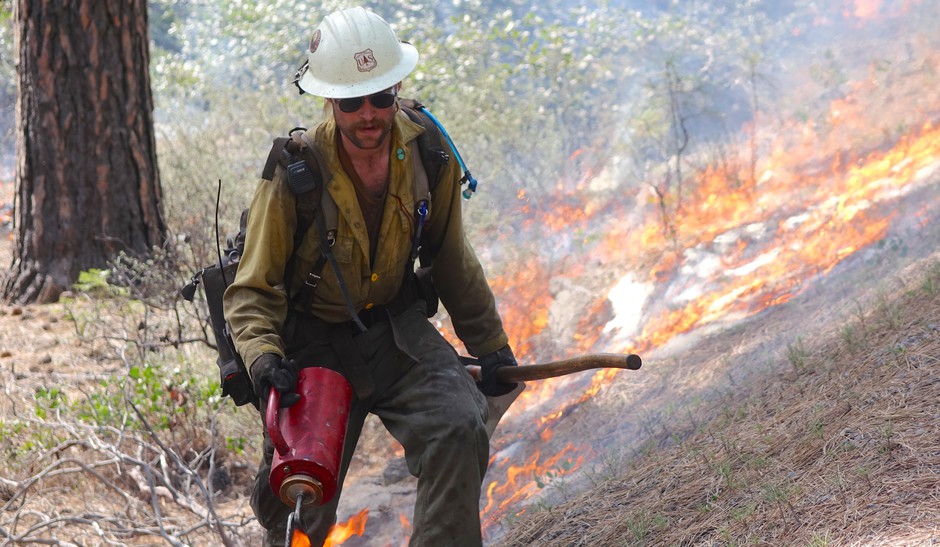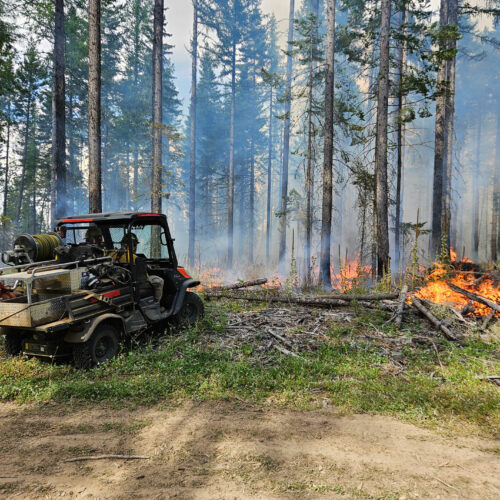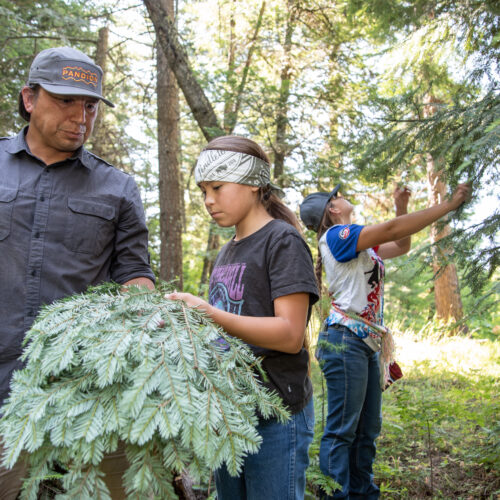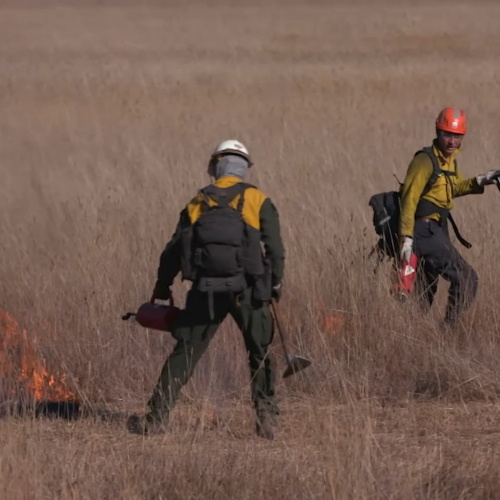
‘Good Fire’ Season: How Land Managers Select Areas For Prescribed Burns
READ ON
Before we began stopping fire in its tracks, forests were healthier. They had fewer trees, more open space and more fire.
“In a lot of our forest systems, we’ve excluded fire for so long. There used to be 30 to 40 times more fire than we’re seeing now,” said Reese Lolley, with the Nature Conservancy and Washington Prescribed Fire Council. “For forest health, there’s a need to put fire back in those landscapes.”
That’s why land managers are using prescribed burns and thinning to restore forests and reduce the extra wood, sticks and needles that fuel megafires.
Lolley said prescribed burn areas can act as a break for firefighters when a megafire hits. Land managers will often consider an area’s topography when they plan prescribed fires. It’s easier for fire crews to work from the top of a hill to the bottom, and so that’s one aspect officials think about when planning prescribed fires.
These types of burns can also be used to protect communities. Take a recent prescribed fire near the outskirts of Roslyn, Washington. A private landowner had thinned the forested area on his property. Fire crews were able to run a prescribed burn through the area to better protect it in the future.
“When the next ‘Jolly Mountain Fire’ or a wildfire comes through, that is a place where wildland fire crews can manage that fire in a much safer way,” Lolley said.
In an earlier study, The Nature Conservancy identified 2.7 million acres of central and eastern Washington in need of restoration. While it’s a good tool, Lolley said there isn’t enough funding to use prescribed burns everywhere.
“We don’t have the resources to put fire on all lands, nor do the [federal and state] agencies, and so they’re making choices,” Lolley said.
Prescribed fires must also happen in the spring and fall, when fuel moisture is high and weather conditions are not sweltering.
A recent prescribed burning pilot project on Washington’s dry forests — the result of a 2016 bill — looked at the benefits and drawbacks of prescribed fires. (Nearby communities sometimes oppose prescribed burns because of the resulting smoke. Lolley said before starting a prescribed fire officials look at wind and weather conditions to lift smoke up and away from communities.)
In the pilot project, managers used prescribed burns on 13 areas on the eastern side of Washington’s Cascades and in the Selkirk Mountains in the northeastern part of the state.
According to a report on the project, smoke had “limited impacts to air quality in communities” in 12 of the 13 areas. One area was burned at the same time as another prescribed burn, and that lead to two days where air quality was “unhealthy for sensitive groups.”
The pilot project successfully reduced fuels and didn’t cause a lot of damage to large trees, which the report said contributed “to the restoration of historically dry forests.”
Washington’s Department of Natural Resources has devised a 20-Year Forest Health Strategic Plan, which aims to increase the “pace and scale” of forest treatments, including prescribed burns and thinning. It would work to restore 1.25 million acres of forest.
“If we fail to do this work, we face formidable wildfire seasons in an increasingly difficult climate,” said DNR Public Lands Commissioner Hilary Franz in a statement. “Improving the health of our forests will reduce risk to lives, communities, livelihoods, water supplies and essential forest ecosystems.”
An OPB investigation found across the West, “foresters are falling short of what they need to do with fire as a tool.” That report found that thinning alone cannot restore forest health — it must be combined with prescribed fires.
It’s also important as the climate changes, The Nature Conservancy’s Lolley said.
“We know where we’ve been headed since 2014, 2015. Predictions moving forward are that we’re going to see a lot more fire on the landscape whether we like it or not,” Lolley said. “So how do we work better toward managing our forests so that we can have better outcomes in terms of smoke, forest health and the other values we care about in our forests?”
Different land managers look for certain things when they’re selecting where prescribed fires will work best.
“Having a stronger understanding of that historical role of fire, in working to better integrate how we think with a warming, changing climate moving forward, that helps us make some better choices about where we choose to put fire,” Lolley said.
Related Stories:

Prescribed fires help manage forests in the Northwest
As wildfire season winds down, crews around Washington and Oregon perform prescribed fires.

How some Northwest tribes cultivate land for First Foods, traditional medicines
Jeremy, Stella and Manaia Wolf, members of the Confederated Tribes of the Umatilla Indian Reservation, collect fresh fir boughs in the Rainwater Wildlife Area near Dayton, Wash. The fir boughs

Fighting fire with fire: Bringing prescribed burns back to Washington state
As the days get hotter and warmer, many Washingtonians are gearing up for the wildfires that will ignite across the region this year, causing smoky skies, evacuations and potentially devastating loss.















